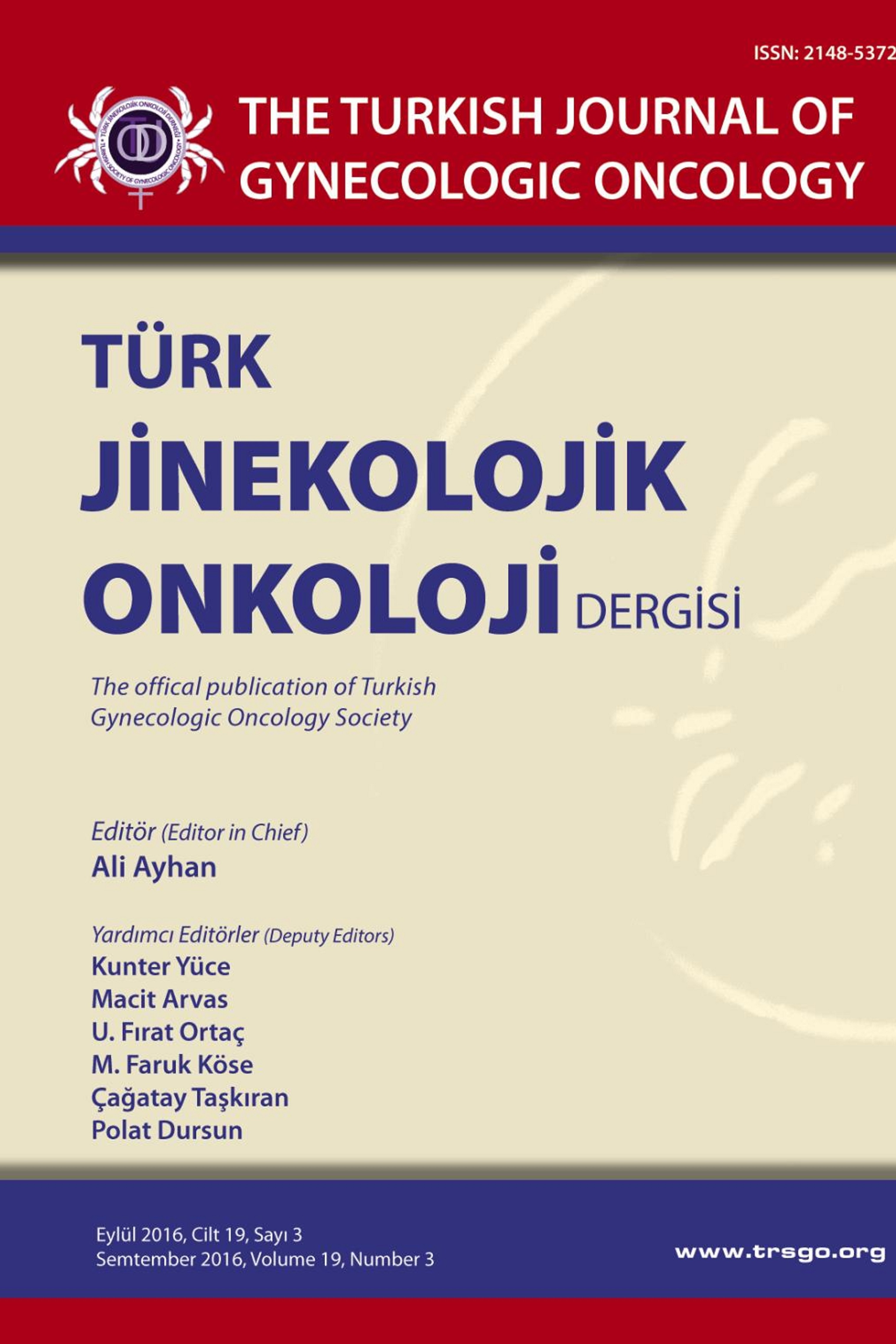ENDOMETRİYAL STROMAL SARKOM TANISI İLE TAKİP EDİLEN 11 HASTANIN KLİNİKOPATOLOJİK DEĞERLENDİRİLMESİ VE BU TIP OLGULARDA LENFADENEKTOMİNİN YERİ; BAŞKENT ÜNİVERSİTESİ HASTANESİ DENEYİMİ
Giriş: Uterin sarkomlar genital sistemin nadir neoplazmlarındandır. Tüm uterin malignensilerin %2-4'nü oluşturmaktadır. Bu tip neoplazmlarda Dünya Sağlık Örgütü (DSÖ)'nün yayınladığı sınıflama kullanılmaktadır, ve bu çalışmada bu tümörün klinikopatolojik özellikleri ve bu özelliklerin prognoza etkisi tanımlanmaya çalışılmıştır. Standart cerrahi yaklaşım total abdominal histerektomi ve bilateral salpingooferektomi olarak kabul edilmektedir. Değişik kaynaklarda cerrahi sonrası adjuvan tedavi yöntemleri olarak kemoterapi, radyoterapi ve hormonoterapi belirtilmiştir. Bu retrospektif çalışmanın amacı endometrial stromal sarkomun (ESS) patolojik özelliklerinin klinik gidişat ve hastalığın davranışı üzerindeki etkilerini değerlendirmektir. Materyal ve Metod: 2007-2010 yılları arasında Başkent Üniversitesi Kadın Hastalıkları ve Doğum Bölümünde histopatolojik tanısı ESS olan 11 hastanın demografik özellikleri, bu hastalara yapılan cerrahiler, bu hastaların prognozları, adjuvant tedavinin etkilerini içeren klinikopatolojik değerlendirmeleri sunulacaktır. İstatistiksel anlamlı değer olarak (p
Background: Uterine sarcomas are rare neoplasm of uterus counting for 2-4 percent of all uterine malignencies. World health organization (WHO) classification is the one that is used for these type of malignencies. In this study our aim is to investigate the hystopathological and clinical patterns of this tumor and their influence on prognosis. It is well known that standart approach for these tumors is total abdominal hysteresctomy and bilateral salphingooferecetomy. Chemotheraphy, radiation theraphy and hormonal therapy are some of the possible choices for adjuvant theraphy. Material and Method: This article will be on 11 patients who had diagnosis as endometrial stromal sarcoma between 2007 and 2010 at Baskent University OB/GYN department. Their demographical situations, different kinds of surgeries that patients were subjected to, survivals of these patients and effects of adjuvant theraphy will be discussed. Results: Mean age of our patients is 44. 9 (range 23 – 65). 2 patients were subjected to myomectomy and the other 5 patients, 1 patient, 1 patient had total abdominal hysterectomy and bileteral salphingooferectomy, only total abdominal hysterectomy and mass excision with laparatomy were performed respectively. For two patient who had ESS on their endometrial biopsies were directly subjected to total abdominal hysterectomy and bileteral salphingooferectomy accompanied with bilateral pelvic and paraaortic lymph node dissection and infracolic omentectomy. For final diagnosis 1 patient had indifferansiated stromal sarcoma, other 3 had low grade ESS while remaining 7 patient had high grade ESS. On 4 out of 8 patients who had undergone lympnode dissection revealed metastatic implants on nodes. Adjuvant chemotherapy especially Ifosfamide – Mesna – Adriamycin was used for 7 patients. Discussion: ESS's are clinically aggresive types of tumor. Adjuvant therapy applied following surgery is found to have very little effect on upgrading the quality of life and survival. Effect of lymphadenectomy on survival needs further prospective studies with larger sample size.
